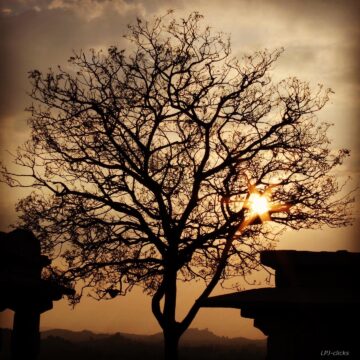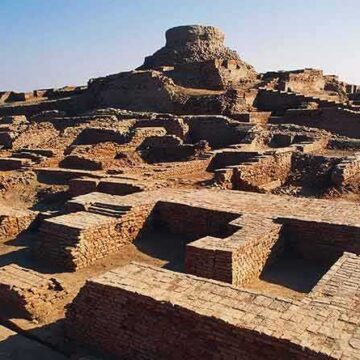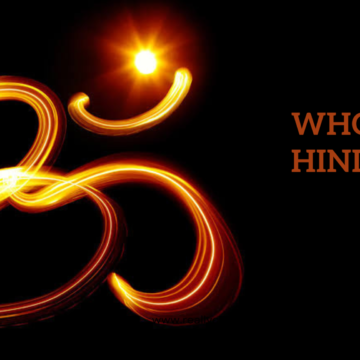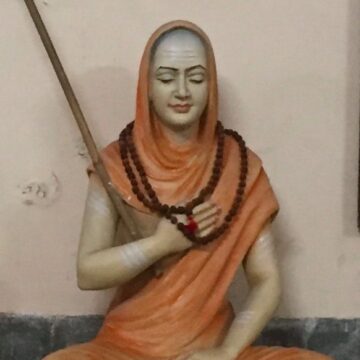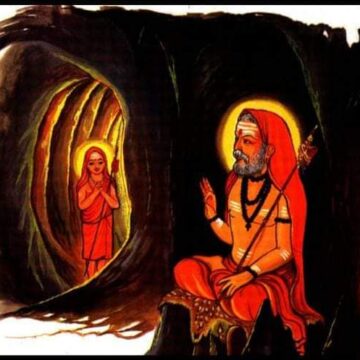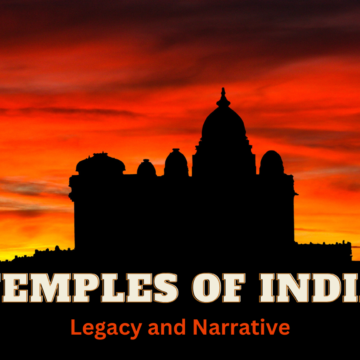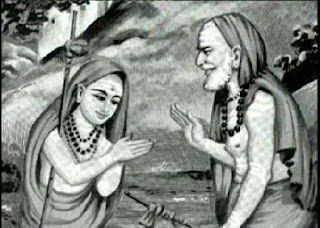Anirudh Kanisetty’s book ‘Lords of the Deccan’ claims that the Ćāḷukyās were originally agriculturalists who formed into bands of brigands going about looting villages and towns, amassing wealth which emboldened them to lay claim to the terrorized territories as sovereigns, legitimised by védic sacrifices.
Lakshmi Prasad J, in his rebuttal, researches and unearths that the Ćāḷukyas of Bādāmī claim descent from Hārīti, a royal matriarch from antiquity, associated with a string of illustrious dynasties. The matronym, Hārītīputra finds mention in the royal panegyrics of at least half a dozen dynasties of Deccan.
With so much information about Calukyas being available in public domain for decades now, one expects a young researcher to be better informed and not get influenced into weaving Bollywood-esque portrayal of our ancestors.
Category: <span>Uncategorized</span>
Understanding Political Systems Of India – Part 4 – Chaos In The Narratives And The Resistance To Correct Them
"Post-independent academia propagated a linear version of history: past equals primitive equals India; future equals advanced equals West. Indian civilization, at least five thousand years old, apart from a high quotient of personal happiness, had a thriving economy with highly evolved arts, literature, education, sciences, spirituality, architecture, and so on. And then came the Western political philosophies, which persistently ill-fit our experiences.
Modern social sciences, with a great colonial hangover, have a strong antipathy for the traditional systems of India. This antipathy and the failure to look at Indian traditions have been dominant narratives in academia, the media, and politics.
We can always look at the past to handle the future better, and there is no better place than India to begin this, as Sri Aurobindo always insisted."
In the final installment of the series titled "Understanding Political Systems Of India" Dr. Pingali Gopal wraps up the discussion about force-fitting Western thought and political frameworks to Indian social systems, at the cost of Indian traditional systems tailor-made for our diverse society.
Understanding Political Systems Of India – Part 3 – Indigenous Political Thinking In Ancient And Modern India
"Western polity conceives of doing away with political parties and creating governments of national unity only in times of war or crisis; India, because of her long tradition of a unity underlying her diversity, should have shown that unity is not a freak phenomenon but a workable basis for new politics."
The current political and social systems being followed in India remain wedded to the older British structures. Concepts such as uncoupling of state and religion, secularism et al are based in Judeo-Christian theology; and where it is not available, these become radically unintelligible.
In the third installment of the series titled "Understanding Political Systems Of India", Dr. Pingali Gopal shares his findings from his study of ancient Indian thinkers such as Kautilya, and modern thinkers such as Sri Aurobindo, and Ananda Coomaraswamy, a Sri Lankan Tamil philosopher with a deep understanding of Indian culture.
Enlightened monarchies, free citizens, and decentralised political units glued together by spiritual and cultural unity were the essence of political India in the past. Following independence, India’s attempt at decolonization was less than half-hearted; and thinkers such as Sri Aurobindo were categorically ignored.
On Fortresses In The Rigveda, Atharvaveda Śaunakiya And (Pre)Harappa And The Dating Of The Samhitas – A. A. Semenenko – Translation
This paper was originally written in Russian by Dr. Aleksandr A. Semenenko, a historian based in Voronezh, Russia.
Dr. Semenenko is one of the few Western scholars who have defended the Out-of-India theory which purports to explain the spread of the Indo-European languages. His work is ground-breaking, because he relies not only on textual or linguistic proof, but also on archaeological and material evidence. His researches have now provided a very solid archaeological underpinning for the OIT.
Dr. Semenenko has recently presented summaries of his findings at Sangam Talks:
Steppe Route of Indo European Dispersal:Preliminary Findings (https://www.youtube.com/watch?v=lgRdwkZnGqA)
The Tarimian Trace of the Indo European Dispersal (https://www.youtube.com/watch?v=jyY7EHotXto)
The Rigveda Chronology And The Indo European Homeland (https://www.youtube.com/watch?v=S1Bsm79cVvk)
Dr. Semenenko's original and far-reaching work has been endorsed by such pioneers of the OIT such as Shrikant Talageri and Koenraad Elst: see for example, the Sangam Talk "Getting serious about the "Aryan" debate" (https://www.youtube.com/watch?v=rDSy9gPAB3s)
The bulk of Dr. Sememnenko's work is in Russian. However, he has also written extensively in English as well, and interested readers can find his path-breaking papers at:
https://independent.academia.edu/AlexandrSemenenko/Articles-in-English
or at:
https://www.researchgate.net/profile/Aleksandr-Semenenko-2
In this monograph, which is the first of his papers to be published in India, Dr. Semenenko shows that Rigvedic hymns mentioning forts being besieged or stormed do not occur in the oldest layers of the Rigveda. The oldest mentions of forts occur in a peaceful context. Dr. Semenenko also decisively refutes the AIT, according to which the earliest hymns should have described the destruction of forts. The author demonstrates that the description of fortresses in the Rigveda and the Atharvaveda reflect a unique chain of archaeological events in the history of South Asia — wherein a period when fortified settlements were besieged and burned down was followed by a period when they existed peacefully. This sequence of events corresponds to a transition from the Early Harappan period to that of Mature Harappa, and was never repeated again. With this insight, Dr. Semenenko has succeeded in establishing an absolute chronology for the Rigveda (which was hitherto not possible).
The translator dedicates his translation to the memory of his late lamented Russian teacher, Dr. Ganesh.V. Marathe. This translation was rendered possible only owing to Dr. Marathe's charity towards a schoolboy who could not have afforded to pay for the Russian lessons.
Hindu, Hinduism, Hindudtva – Part 2
In the second part, Dr. Pingali Gopal discusses the evolution of political Hindutva after independence, and sheds light on the failure to define the basic terms as we struggle with the alleged rise of ‘Hindu fundamentalism'.
Hindu, Hinduism, Hindutva – Part 1
Who exactly is a ‘Hindu’ and what are ‘Hinduism’ and ‘Hindutva’? Does it mean the land (geography), ancestral roots (history), or a shared culture?
Dr. Pingali Gopal tackles this proverbial bull by the horns, systematically looking at attempts to define and distinguish ‘Hinduism’ and ‘Hindutva’ by Western thought, the Indian liberal elite, and practising Hindus.
Śaṅkara Charitam – a re-telling – Chapter -14 – Aja Bakṣiṭha Bāśyaṃ
Chapter 14 of Śaṅkara Charitam, titled Aja Bakṣiṭha Bāśyaṃ, takes us through the experience of Śaṅkara’s Guru Govinda Bhagavatpāda learning from Gauḍapāda, cursed to be in the form of Brahmarākṣasa. What happens after the lessons are over, where destiny takes each of them - Śaṅkara, his Guru Govinda Bhagavatpāda, and his Guru's Guru Gauḍapāda; will be revealed in this chapter.
Śaṅkara Charitam – a re-telling – Chapter-13 – At the feet of the Guru
Chapter 13 of Śaṅkara Charitam takes us through Śaṅkara’s experience with his Guru, Govinda Bhagavatpāda, the completion of his education, and Guru's blessings and final teachings for Śaṅkara to take with him in the world and tackle the thick forest of ignorance enveloping the minds of the people.
Gauḍapāda as Brahmarākṣasa finds Govinda Bhagavatpāda acceptable as a disciple, and the teaching starts atop the pipal tree in which the Brahmarākṣasa resides..........
Unseen Temples of India – Legacy and Narrative – Part 2
Building a separate structure to house murtis, carriers of divinity, for personal and public worship of deities is an old tradition prevalent in India.
Manisha Chitale takes us through the history and evolution of temple architecture in the country and how temples have shaped the Sanatana dharmik civilisation.
Śaṅkara Charitam – a re-telling – Chapter-12 – Śivaḥ kevalo’ham
Chapter 12 of Śaṅkara Charitam takes us through Śaṅkara’s meeting with his Guru, and the Guru's acceptance of Śaṅkara as his disciple.
Govinda Bhagavatpāda asks the boy standing at the foot of the cave, inside which he meditated for centuries, to introduce himself and Śaṅkara calls himself - "Śivaḥ kevalo’ham".
The life of Gauḍapāda as a Brahmarākṣasa and his meeting with Govinda Bhagavatpāda is also mentioned in this chapter.

